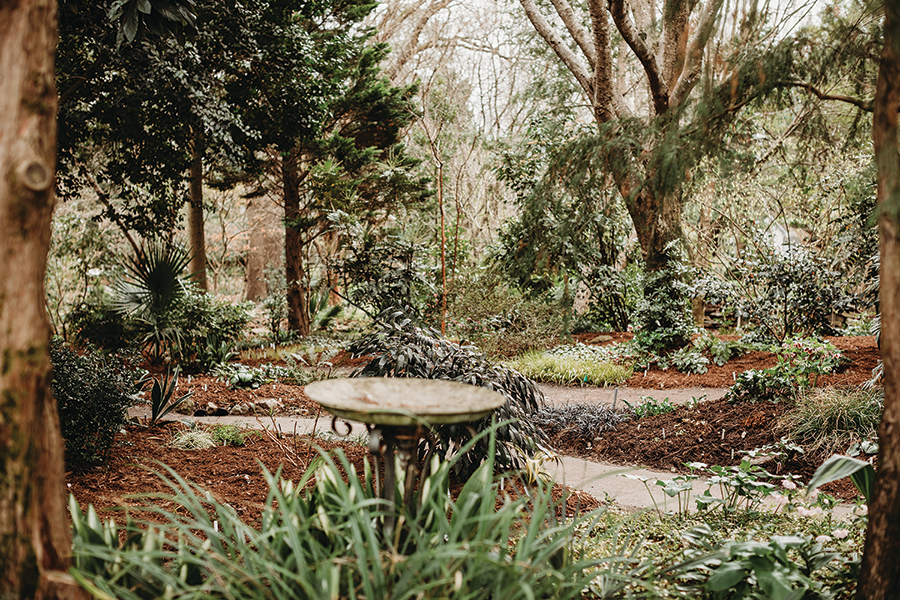Life in the Slow Lanes
In praise of the snail’s pace
By Jim Dodson
The TED Radio Hour recently hosted a fascinating program devoted to the art of slowing down.
The program began with a public TV producer from Norway describing how a historic passenger train rigged with multiple wide-angle cameras documented the passing landscape during its daily run between Bergen and Oslo for seven hours and 14 minutes.
There was no voiceover or narrative explanation of the journey — merely the peaceful countryside passing in real time.
The train documentary became a runaway sensation.
What might sound like an elaborate April Fool’s joke turned out to be a ratings bonanza when an estimated 1.2 million Norwegians — roughly one-fifth of the country’s population — tuned in to watch Bergensbanen (The Bergen Line), giving birth to a new concept called “Slow TV.”
Since that time, similar programs have devoted eight straight hours to Norway’s “National Firewood Night,” 18 straight hours to salmon fishing, more than eight hours to people knitting and chatting, 60 hours to Norwegian hymn-singing and five-and-a-half days to passengers on a cruise ship.
The producers discovered, in essence, that viewers are longing for something authentic, something that minute-by-minute matches the pace of actual living, not manufactured “reality” shows that simulate or distort events in real time. In a world forever speeding up, Norwegians seemed eager to slow down and smell the roses — or at least watch them grow.
Another TED stage segment featured an efficiency-driven professor from The Wharton School of Economics who learned a valuable lesson in the art of procrastination — how “slowing down” can be a boon to personal creativity — from a pair of his business school students who took six months just to come up with a name for their proposed business idea, right up to the project’s deadline.
The company name the students finally came up with was Warby Parker, which evolved into a billion-dollar eyewear firm that was recently named the world’s “Most Innovative Company,” proving the timeless maxim that all good things come in time — and often require lots of it.
Among other insights professor Adam Grant gleaned from the experience — including his own subsequent efforts to teach himself to procrastinate — is that putting something aside often aids in refining the outcome; that human beings possess a better memory for incomplete tasks that stay active in the mind than hastily produced results; and that, in the end, our biggest regrets are not what we failed to accomplish — but what we never took the necessary time to try to do well.
“What some people call procrastination,” professor Grant says, quoting screenwriter Adam Sorkin, “I call thinking.”
In a world where feedback is as instantaneous as a nasty tweet, the faster we move through our days, the professor concluded, the less inclined we are to pause and reflect on methods that might produce a better outcome.
As one who has consciously been “slowing down” for years, it was reassuring to discover there are others in the world who believe there is great value — not to mention improved perspective and sanity — in taking the time to do the job right, to slow down and think it through, to measure twice and cut once or simply stop and buy some of those proverbial roses, whatever cliché works for you.
Pausing to think about this, I do believe it was the house and garden I built on a forested hill in Maine two decades ago that brought this important lesson home to bear.
The year it took to clear the land and rebuild the ancient stone walls that once defined an 18th-century farmstead gave me time to conceive and refine the plans for the house, which took an additional nine months to actually construct with the help of a pair of skilled post-and-beam housewrights. Creating the interior of the house (which I largely did on my own — building walls and floors, custom designing and making bookshelves and the kitchen cabinetry) also underwent several revisions and took at least three more months to complete than planned. In the end, just about everything about that house pleased me and suited my young family perfectly.
In a sense, the forest around us and the ambitious landscape garden I subsequently set out to create conveyed an even more enlightening lesson about the value of taking one’s own sweet time.
Nature keeps her own clock, and a northern woodland can’t be rushed into leafing out in spring or fading away in autumn. Summer’s lease in Maine may seem all too brief while winter can feel maddeningly endless. And yet, as I learned, watching the seasons come and go at their own pace was like attending a seminar in the art of Slow TV, a chance to absorb the beauty and spiritual messages of a living world that follows an ancient dance as old as the stars.
Any gardener worth his composted cow manure understands that the life of a garden is a slow-moving and somewhat mysterious affair, relying on faith, patience and years, if not decades, of learning about plants and their needs from others who are wiser than you about the art of coaxing living things from the soil.
Even my work as a journalist and author — always facing one kind of deadline or another — reminds me of the importance to take my time and get the story right.
At the end of summer in 2017, I set out to travel along the Great Wagon Road from Philadelphia to Augusta, Georgia. I calculated that a three-week jaunt investigating the historic towns and people who reside along arguably America’s most historic Colonial-era road would give me a wealth of material for a book on the very road that brought my European forebears — and possibly yours — to the Southern frontier.
As of last week, I’ve officially clocked more than 2,500 miles traveling the 780-mile road and am now starting into my third year of researching the astonishing life of this ancient American pathway, constantly learning new things and unearthing stories that demand time to pause and take a deeper look, to linger and reflect, to pursue new leads and find the facts.
It’s been an unexpected and bewitching journey, to say the least, something akin to a personal Chautauqua that has immeasurably enriched my life and understanding of America. I shall almost hate to see it reach its conclusion, probably sometime in early summer when I finally cross the Savannah River at Augusta.
For the record, I’ve rewritten the book’s prologue and first five chapters at least half a dozen times already, discovering as I do how the work comes a little more alive and compelling each time out, proving strength resides in careful (and sometimes slow) revision. Hopefully, my brilliant young editor at Simon & Schuster will agree, whenever he finally gets the book.
Not for the first time, traveling the Wagon Road has also reinforced my self-awareness that I am a natural slow-lanes traveler who will always choose the winding two-lane roads if at all possible.
If past truly is prelude to the future — or at least the present — this instinctual habit was likely encouraged by my first job as a cub reporter at the Greensboro News and Record in the late 1970s. Placed in command of a DayGlo orange AMC Pacer staff car, my task was to find colorful characters and interesting feature stories for the Sunday paper in a 50-mile circumference of quiet countryside around the Gate City, a job that took me along winding back roads from Seagrove to the Blue Ridge.
Looking back, I realize those slow road adventures were an education unto themselves, a great way to begin my writing career. It was maybe the most fun job I’ve ever had.
All of which may explain why, as the world seems to speed up with each passing day, I remain a committed slow-lanes traveler who is in no particular rush to get where he’s going. What I supposedly lose in time by avoiding interstates and super highways, I gain back double in terms of perspective and peace of mind by passing through beautiful countryside and small towns where time moves at a slower pace. Come spring, roadside produce stands seem to whisper my name.
Recently I flew a long way on an airplane, about a dozen hours in the air each way.
I took the slow way there and back.
In normal times airports are noisy places with folks rushing frantically about. But once I’m in the air, locked in a silver bird soaring as high as 40,000 feet above the Earth, it’s such a pleasure to read an entire book or simply sit and think about life as I gaze out at continents of clouds.
On this trip, I discovered that one of the video channels featured its own version of Slow TV — 45-minute film loops showing either a serene rainforest or the restless ocean on the craggy Northwest Coast.
I watched both films — twice.
Someday I may graduate to “National Firewood Night” or 60 hours of Norwegians singing hymns, but for now that rainforest and restless sea worked their magic on my high-flying soul.
“Does anything actually happen in that movie,” my curious seatmate was compelled to ask at one point, unplugging from his action thriller.
“Not much,” I admitted. “Isn’t it great?” PS
Contact Editor Jim Dodson at jim@thepilot.com.






















